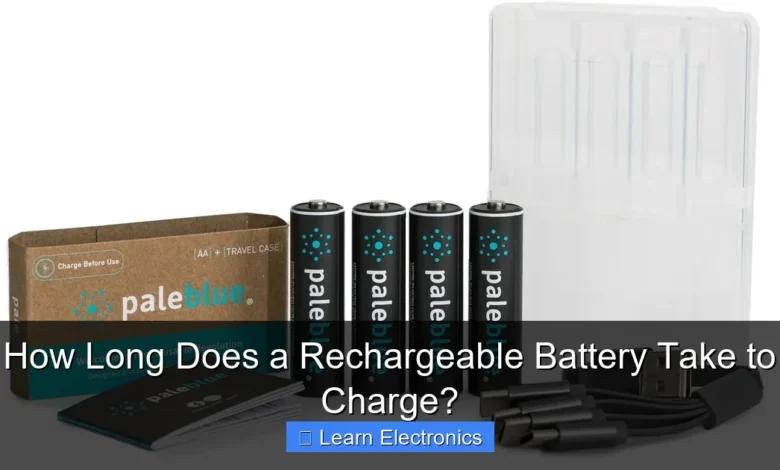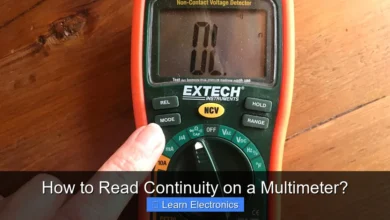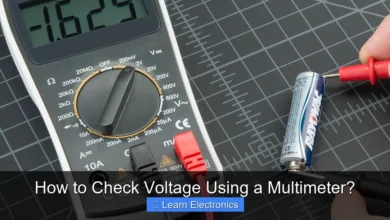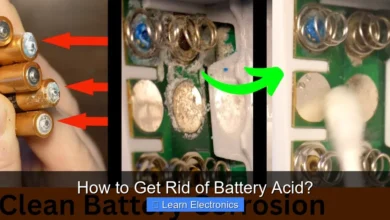How Long Does a Rechargeable Battery Take to Charge?

How long does a rechargeable battery take to charge? The duration varies significantly, influenced by numerous factors including battery chemistry, capacity, charger type, and the battery’s overall condition. Understanding these variables is key to efficiently and safely powering your devices, ensuring both optimal performance and longevity for your rechargeable cells.
The process of replenishing a rechargeable battery’s energy stores isn’t a one-size-fits-all scenario. Different battery technologies and charging methods dictate vastly different timelines, making it crucial for consumers to grasp the underlying principles to manage their expectations and maintain their devices effectively.
Quick Answers to Common Questions
What’s the typical charging time for a rechargeable battery?
Generally, a standard rechargeable battery can take anywhere from 2 to 12 hours to fully charge, depending on its capacity and the charger’s power output. Smaller batteries charge faster, while larger ones naturally take more time.
Does the type of rechargeable battery affect its charging speed?
Absolutely! Different types of rechargeable batteries, like NiMH, NiCd, or Li-ion, have specific charging requirements and durations. Lithium-ion batteries often charge quicker than NiMH, for example, especially with a compatible fast charger.
How can I tell if my rechargeable battery is fully charged?
Most modern chargers have an indicator light that changes color or turns off when your rechargeable battery is completely full. Always refer to your charger’s manual for the most accurate information on its specific indicators.
📑 Table of Contents
- Factors Influencing Charging Time
- Understanding Different Battery Chemistries and Their Charging Needs
- The Role of the Charger: Smart vs. Dumb
- Calculating Approximate Charging Time: Unpacking How Long Does a Rechargeable Battery Take to Charge?
- Optimizing Charging for Longevity and Efficiency
- Typical Charging Times for Common Devices
- Conclusion
Factors Influencing Charging Time
Several critical elements interact to determine the duration of the charging process for any rechargeable battery. From the inherent characteristics of the battery itself to the capabilities of the charging device, each factor plays a significant role.
Battery Chemistry
- Lithium-ion (Li-ion): Widely used in smartphones, laptops, and electric vehicles, Li-ion batteries charge relatively quickly, often reaching 80% capacity within 1-2 hours, with the final 20% taking longer due to a slower “trickle” charge phase designed to protect the battery.
- Nickel-Metal Hydride (NiMH): Common in AA/AAA sizes, these batteries typically take 2-10 hours, depending on their capacity and the charger’s output. They are more susceptible to heat build-up during fast charging.
- Nickel-Cadmium (NiCad): While largely replaced by NiMH and Li-ion, NiCad batteries are known for their robustness. They can charge in 1-4 hours but are prone to the “memory effect” if not fully discharged.
Battery Capacity (mAh or Wh)
Battery capacity, measured in milliampere-hours (mAh) for smaller batteries or watt-hours (Wh) for larger ones, directly correlates with charging time. A higher capacity battery stores more energy and, therefore, requires more time to fill up at a given charging rate. For instance, a 3000 mAh battery will take roughly twice as long to charge as a 1500 mAh battery, assuming the same charger.
Charger Type and Power Output (Amperage)
The charger’s output current (measured in Amperes, A or mA) is a primary determinant. A 1A (1000 mA) charger will charge a battery twice as fast as a 0.5A (500 mA) charger. Fast chargers provide higher amperage, reducing charging times significantly, but only if the battery and device are designed to safely accept such currents.
Battery Age and Condition
As batteries age, their internal resistance increases, and their overall capacity diminishes. Older or degraded batteries may take longer to charge to their full (reduced) capacity and may not hold a charge for as long. Physical damage or exposure to extreme temperatures can also negatively impact charging efficiency and time.
Temperature
Charging in very cold or very hot conditions can extend charging times. Cold temperatures slow down chemical reactions within the battery, while excessive heat can trigger safety mechanisms that reduce the charging rate to prevent damage or overheating.
Understanding Different Battery Chemistries and Their Charging Needs
The inherent properties of a battery’s chemical composition dictate its optimal charging strategy, influencing both the speed and safety of the process. Tailoring the charging approach to the specific chemistry is crucial for battery health.
Lithium-ion (Li-ion) Batteries
Li-ion batteries are popular due to their high energy density and lack of memory effect. They typically use a two-stage charging method: constant current (CC) followed by constant voltage (CV). The CC phase rapidly charges the battery to about 70-80% capacity, then the CV phase slowly tops it off, preventing overcharging and cell degradation. This method ensures efficient and safe power delivery.
Nickel-Metal Hydride (NiMH) Batteries
NiMH batteries are an improvement over NiCad, offering higher capacity and being more environmentally friendly. They are best charged using “smart” chargers that can detect voltage changes or temperature rises to prevent overcharging, which can damage the battery. While they can be charged quickly, prolonged fast charging can generate significant heat, reducing their lifespan.
Nickel-Cadmium (NiCad) Batteries
Though less common now due to environmental concerns and the “memory effect,” NiCad batteries were once prevalent. Their charging process requires careful attention to avoid overcharging, which can lead to cell damage. They generally prefer a full discharge before recharging to mitigate the memory effect, a characteristic that differentiates this practice from Li-ion protocols.
The Role of the Charger: Smart vs. Dumb
The type of charger you use is just as important as the battery itself. Chargers range from simple, inexpensive models to sophisticated “smart” devices, each offering different levels of efficiency and battery protection.
Basic (Trickle) Chargers
These chargers provide a constant, low current to the battery. While safe for overnight charging of some battery types, they are slow and can potentially overcharge certain chemistries if left unattended for too long. They lack the intelligence to detect when a battery is full, making them less ideal for modern rechargeable batteries.
Smart/Intelligent Chargers
Smart chargers are equipped with microprocessors that monitor the battery’s voltage, temperature, and internal resistance. They can detect the battery’s state of charge and adjust the charging current accordingly, switching to a trickle charge or completely cutting off power once the battery is full. This approach significantly extends battery life and reduces charging time while enhancing safety.
Fast Chargers
Designed to deliver high currents, fast chargers dramatically reduce charging times. However, they must be used with batteries and devices specifically designed to handle rapid charging. Smart fast chargers incorporate sophisticated algorithms to manage heat and prevent damage, making them a popular choice for high-demand applications like smartphones and electric vehicles.
USB Charging
USB charging is ubiquitous for many portable electronics. The power output can vary significantly depending on the USB standard (e.g., USB 2.0, USB 3.0, USB-C Power Delivery). While convenient, slower USB ports may extend charging times considerably compared to dedicated wall adapters or fast chargers. The device itself often dictates the maximum charging rate it will accept via USB.
Calculating Approximate Charging Time: Unpacking How Long Does a Rechargeable Battery Take to Charge?
Estimating the charging time for a rechargeable battery involves a simple formula, but it’s important to understand its limitations and what factors can influence the actual duration. Knowing how long does a rechargeable battery take to charge can help you plan your usage better.
The Formula
A basic approximation of charging time can be calculated using the following formula:
Charging Time (hours) = Battery Capacity (mAh) / Charger Output Current (mA)
However, this formula doesn’t account for charging efficiency losses, which typically range from 10-30% (meaning some energy is lost as heat). Therefore, it’s advisable to add an efficiency factor (e.g., divide by 0.8 to account for 20% loss):
Actual Charging Time (hours) = (Battery Capacity (mAh) / Charger Output Current (mA)) / Charging Efficiency
Where Charging Efficiency is a decimal (e.g., 0.8 for 80% efficiency).
Practical Examples
- Smartphone Battery:
- Capacity: 4000 mAh
- Charger Output: 2000 mA (2A)
- Efficiency: 85% (0.85)
- Calculation: (4000 mAh / 2000 mA) / 0.85 = 2 / 0.85 = ~2.35 hours.
- AA NiMH Battery:
- Capacity: 2500 mAh
- Charger Output: 500 mA (0.5A)
- Efficiency: 75% (0.75)
- Calculation: (2500 mAh / 500 mA) / 0.75 = 5 / 0.75 = ~6.67 hours.
Remember, these are estimates. Actual times can vary based on the battery’s state of charge when starting, temperature, and the specific charging profile implemented by the charger and battery management system.
Optimizing Charging for Longevity and Efficiency
Extending the lifespan of your rechargeable batteries and ensuring they charge efficiently requires more than just plugging them in. Adopting smart charging habits can make a significant difference.
Avoid Overcharging and Deep Discharges
While modern smart chargers are designed to prevent overcharging, prolonged trickle charging can still stress batteries. Similarly, completely draining a Li-ion battery (deep discharge) can cause irreversible damage and reduce its overall capacity. Aim to keep Li-ion batteries between 20% and 80% charge for optimal longevity. NiMH batteries, however, benefit from occasional full discharge cycles to prevent the “memory effect” and maintain their full capacity.
Temperature Management
Charging in extreme temperatures, whether too hot or too cold, can harm batteries. High temperatures accelerate degradation, while very low temperatures can impede charging efficiency and even cause permanent capacity loss. Always charge batteries at room temperature whenever possible.
Using the Right Charger
Always use a charger that is compatible with your battery type and rated for the correct voltage and current. Using an underpowered charger will prolong charging times, while an overpowered or incompatible charger can damage the battery or pose a safety risk. For the best results, stick to the charger supplied by the manufacturer or a reputable third-party equivalent that follows the recommended charging protocol.
Understanding Charge Cycles
A “charge cycle” refers to one full discharge and one full recharge of a battery. Most rechargeable batteries have a limited number of charge cycles before their capacity significantly diminishes. By topping off your battery frequently (e.g., from 50% to 100%) rather than letting it fully drain and then fully recharging it, you effectively consume only a fraction of a charge cycle, thus extending its overall lifespan. This practice is particularly beneficial for Li-ion batteries.
Typical Charging Times for Common Devices
The charging time for everyday rechargeable devices can vary widely. Here’s a general overview, often considering how long does a rechargeable battery take to charge for popular electronics.
| Device/Battery Type | Approximate Capacity | Typical Charging Time (using standard charger) | Notes |
|---|---|---|---|
| Smartphone (Li-ion) | 3000-5000 mAh | 1.5 – 3 hours | Faster with quick charge tech; last 20% can be slower. |
| Laptop (Li-ion) | 40-80 Wh | 2 – 4 hours | Can vary significantly by model and charging wattage. |
| AA NiMH Batteries | 1800-2800 mAh | 3 – 8 hours | Depends heavily on charger current and battery capacity. |
| Tablet (Li-ion) | 6000-10000 mAh | 3 – 6 hours | Larger capacity requires more time. |
| Wireless Earbuds (Li-ion) | 30-100 mAh (per bud) | 0.5 – 1.5 hours | Often charged via case, which also has a battery. |
| Power Tool Battery (Li-ion) | 2000-6000 mAh (18V/20V) | 0.5 – 2 hours | Fast chargers are common for these, but specific to brand. |
Smartphones and Tablets
Most modern smartphones and tablets use Li-ion batteries and support some form of fast charging. While a complete charge might take 1.5 to 3 hours, many devices can reach 50% in under 30 minutes. The final stages of charging are often throttled to preserve battery health.
Laptops
Laptop batteries, with their larger capacities, typically take longer, ranging from 2 to 4 hours. USB-C Power Delivery (PD) has standardized and often accelerated laptop charging, allowing higher wattages to be delivered efficiently.
Power Tools
Power tool batteries, often Li-ion, are designed for rapid charging due to their demanding usage. Many dedicated power tool chargers can replenish a battery in under an hour, sometimes as quickly as 30 minutes, to minimize downtime for professionals.
AA/AAA Batteries
NiMH AA/AAA batteries in consumer electronics can take several hours to charge, especially with basic chargers. Smart chargers can often reduce this time significantly, sometimes to 2-3 hours for a full set of batteries, by optimizing the current for each cell.
Conclusion
The question of “how long does a rechargeable battery take to charge?” doesn’t have a single, simple answer, but rather a spectrum of possibilities determined by a complex interplay of battery chemistry, capacity, charger intelligence, and environmental conditions. By understanding these factors, you can make informed decisions about your charging habits, select appropriate chargers, and ultimately extend the life and optimize the performance of all your rechargeable devices. Prioritizing smart charging practices not only saves time but also contributes to the longevity and safety of your valuable electronics.
Frequently Asked Questions
How long does a rechargeable battery typically take to charge?
The charging time for a rechargeable battery varies widely based on its capacity and the charger’s output current. Small AAA batteries might take a couple of hours, while larger laptop or power tool batteries could require several hours for a full charge. Always refer to your device’s or battery’s specifications for an accurate estimate.
What factors influence how long a rechargeable battery takes to charge?
Several key factors determine the charging duration for a rechargeable battery. These include the battery’s capacity (mAh), the charger’s output current (Amps), the battery’s chemistry (e.g., Li-ion, NiMH), and its current state of discharge. Environmental temperature can also play a minor role.
Does the type of rechargeable battery chemistry affect charging time?
Yes, the chemistry of a rechargeable battery significantly impacts its charging time. Lithium-ion batteries often charge relatively quickly, while nickel-metal hydride (NiMH) batteries might take longer, especially if using a slower, trickle charge method. Each chemistry has specific charging profiles and recommended rates.
How does the charger’s type or speed affect how long it takes to charge a rechargeable battery?
The type and speed of your charger directly impact how long a rechargeable battery takes to charge. A fast charger, designed to deliver higher current, will reduce charging time significantly compared to a standard or trickle charger. However, using too high a current for a specific battery can potentially shorten its lifespan.
Is there a difference in charging time for a new rechargeable battery’s first charge?
For most modern rechargeable batteries, especially Lithium-ion, there isn’t a significant difference in charging time for the first charge compared to subsequent charges. Older battery chemistries like NiCad sometimes benefited from an initial “conditioning” charge, but this is largely unnecessary with newer technologies. Simply charge it until full according to the manufacturer’s instructions.
How can I tell when a rechargeable battery is fully charged to avoid overcharging?
Most modern chargers for rechargeable batteries have indicators, such as LED lights that change color or turn off, to signal a full charge. Smart chargers also automatically stop charging once the battery reaches capacity, preventing overcharging. Always consult your charger’s manual for its specific indications and safety features.



